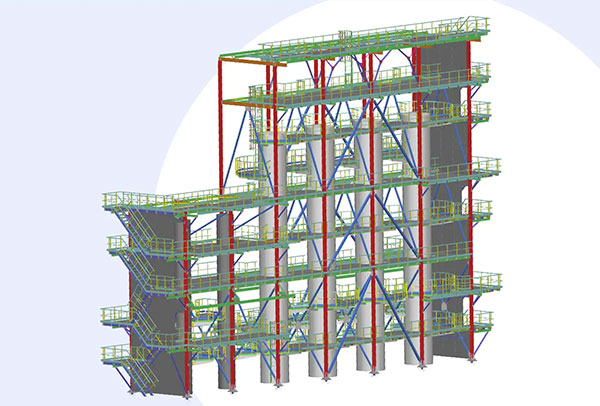CAD Exchanger Releases CAD Exchanger 3.19.0
Read RVT files independently from Revit software, explore BIM properties with a BIM-specific data model, and leverage BIM-friendly CDXBIM format for faster loading of massive models.

BIM data model. Image courtesy of CAD Exchanger.
Latest News
June 20, 2023
CAD Exchanger has released CAD Exchanger 3.19.0. The company has released a number of major updates:
- New Autodesk Revit format
- BIM-specific data model
- CAD Exchanger native format CDXBIM
For developers of BIM software, CAD Exchanger already supported IFC (versions 2x3 and 4), DWG, DXF and now extend the portfolio with Autodesk Revit file format. Revit is one of the most popular BIM formats, and we are glad to present its support in CAD Exchanger SDK.
An RVT file is an Autodesk Revit format with the .rvt file extension used in the Architecture Engineering Construction (AEC) segment. The stored data can include all the architectural details associated with a building design project: basic elements for a construction, building components, families and special elements such as openings.
At this stage, there are a few versions of the mainstream file format released in the last couple of years (2021, 2022). Currently, the import of RVT files is available only in SDK, but support in Lab will appear in a future version.
BIM-Specific Data Model
Since 3.19.0, software developers can use CAD Exchanger's BIM-specific data model to get different properties and saved structure, edit the model or create it from scratch. It is a more extended version of a common data model tailored specifically for BIM workflows. Being inspired by the IFC data structure, it can store and translate materials, colors, patterns and other nongeometrical properties.
Each element of the BIM model has a fixed class field, which carries the associativity with the Revit families. This allows storing, reusing and iterating upon families with the help of CAD Exchanger SDK. For maximum performance, only used elements of the families are being translated, leaving unused family elements unsaved.
For more product details, click here.
Sources: Press materials received from the company and additional information gleaned from the company’s website.
Subscribe to our FREE magazine, FREE email newsletters or both!
Latest News
About the Author
DE’s editors contribute news and new product announcements to Digital Engineering.
Press releases may be sent to them via [email protected].






